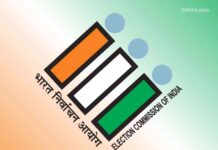Prof. R.K.Panda
It is now well acknowledged that the Indian economy has been severely hit by the prolonged (more than 50 days) nationwide lockdown imposed on the outbreak of coronavirus. As estimated, there has been a significant fall in gross domestic output with soaring unemployment and a fast drop in consumption demand in the country.

The MSME sector which happens to be the second largest employer after agriculture and drives inclusive growth by providing livelihood support to the largely vulnerable and marginalized sections in the country (owners and operators of MSMEs) is worst affected in terms of loss of income in the lockdown. In view of this emerging situation, there is now a strong wave of argument sweeping across the country emphasizing policy measures to revive the economy with a greater focus on the MSME sector.
Rightly, in line with the current thinking, the Prime Minister on May 13, 2020 has announced an economic package of Rs. 20 Lakh Crore covering almost all the key sectors with the MSME getting the highest amount of Rs. 5.94 Lakh Crore. The relief package announced for MSME is mostly credit-focused. The basic logic behind providing easy credit access to this sector is perhaps that these enterprises being run by the owners with weak revenue suffer from a dearth of liquidity.

However, at this hour when these enterprises are in unprecedented trouble, the government’s notion that MSMEs suffer from liquidity crunch is not only questionable but also the efficacy of the credit-focused relief measures to revive the sector is very much challenged. We are well aware of the structural and institutional constraints through which the MSMEs operate in India. Structurally MSME is overwhelmingly dominated by micro enterprises.
As per the 73rd NSS data (2015-16), of the total MSMEs working in India nearly 99 percent are micro units leaving hardly 1 percent in the small and medium categories. These micro-enterprises are largely one-person shows with the owner running the entire business with the help of assistants and workers. With limited revenue these enterprises operate at low production capacity and low turnover.

The MSMEs largely operate at the local level and hence they work under multiple deficiencies. These enterprises suffer from lack of basic infrastructural facilities like water, power, communication network, etc. In the procurement of raw materials they do not get quality inputs. They suffer from the non-availability of skilled manpower. In marketing the finished products they do not get the right price. There is also a difference between manufacturing and service MSMEs in terms of asset composition.
Since the latter does not have many hard assets it lacks qualifying in accessing sizeable credit from formal agencies for investment and growth. Most of the micro units are funded by friends, relatives, and informal agencies.

Secondly, these enterprises operate under small revenue. Hence they need rapid turnover in business and more working capital to keep their enterprises viable. But it is often stated that the Government and public sector units being the major buyers of MSMEs’ product, there is inordinate delay in payments from these institutions. As it is estimated, the total outstanding payment due to MSMEs from government and PSUs as on March 31, 2020 comes to Rs.4.95 Lakh crore. Thus, delay in payment poses a serious working capital threat to these enterprises. It complained that late payment is the leading cause of liquidity issues and the silent killer of MSMEs’ business.

In the present pandemic context the country is in a complex mesh of circumstances. Fight against the virus is still going on with lockdown continuing in many parts of the country. Workers en masse are leaving cities and workplaces. Consumption demand is at a very low level. Enterprises with no revenue are continuing with fixed costs and depleting reserves. All these pose serious challenges before the MSMEs to restart their business activities.

Providing mere opportunities for better access to credit from banks may not induce the entrepreneur to borrow. Besides getting banks to actually lend with no credible revenue stream even if there is a government guarantee against non-repayment of debt may still be a challenge in the present circumstances. Between credit and conventional fiscal expansion the latter is considered a better option in the present situation. A fiscal stimulus is the need of the hour for raising the morale of the MSMEs to restart.
(The writer is a former Professor of Economics at Utkal University, Bhubaneswar)






























